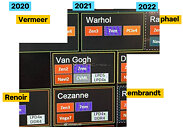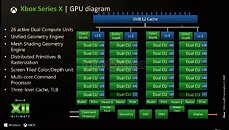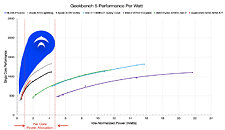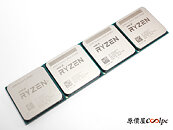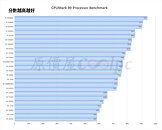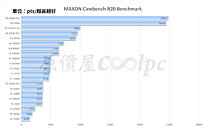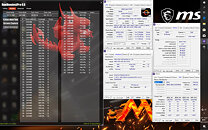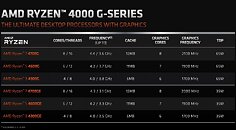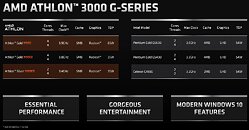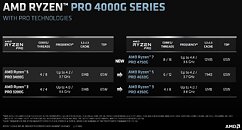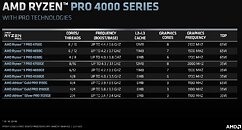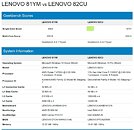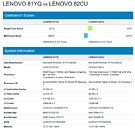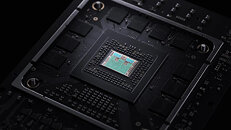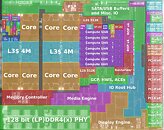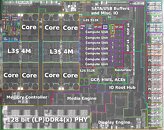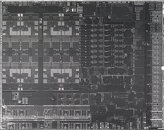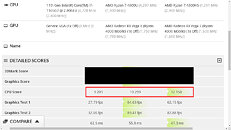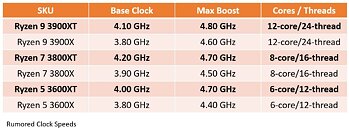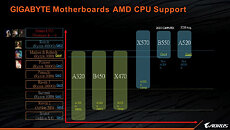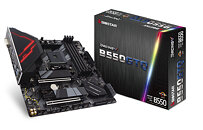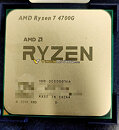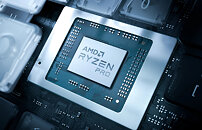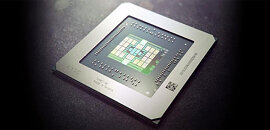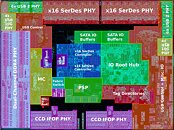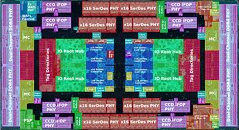
AMD Warhol, Van Gogh, and Cezanne to Make Up Company's 5th Gen Ryzen
A May 2020 report put together with info from multiple sources pointed towards AMD's client-segment product roadmap going as far into the future as 2022. The roadmap was partial, with a few missing bits. VideoCardz attempted to reconstruct the roadmap based on new information from one of the primary sources of the May leak, @MeibuW. According to the roadmap, 2020 will see AMD debut its 4th Gen Ryzen "Vermeer" desktop processors featuring "Zen 3" CPU cores, built on TSMC N7e or N7P silicon fabrication process, and offering PCIe Gen 4. The "Renoir" APU silicon combining up to 8 "Zen 2" CPU cores with a 512-SP "Vega" iGPU debuted on the mobile platform, and recently launched on the desktop platform as an OEM-exclusive. It remains to be seen if AMD launches this in the DIY retail channel.
2021 is when three new codenames from AMD get some air-time. "Warhol" is codename for the 5th Gen Ryzen part that succeeds "Vermeer." Interestingly, it too is shown as a combination of "Zen 3" CPU cores, PCIe Gen 4, and 7 nm. Perhaps AMD could innovate in areas such as DRAM (switch to PC DDR5), and maybe increase core counts. DDR5 could herald a new socket, after 4 years of AM4. The second silicon bound for 2021 is "Van Gogh," an APU that combines "Zen 2" CPU cores with an RDNA2 iGPU. Interestingly, "Cezanne," bound for the same year, has the opposite CPU+iGPU combination - a newer gen "Zen 3" CPU component, and an older gen "Vega" iGPU. The two chips could target different markets, looking at their I/O, with "Van Gogh" supporting LPDDR5 memory.
2021 is when three new codenames from AMD get some air-time. "Warhol" is codename for the 5th Gen Ryzen part that succeeds "Vermeer." Interestingly, it too is shown as a combination of "Zen 3" CPU cores, PCIe Gen 4, and 7 nm. Perhaps AMD could innovate in areas such as DRAM (switch to PC DDR5), and maybe increase core counts. DDR5 could herald a new socket, after 4 years of AM4. The second silicon bound for 2021 is "Van Gogh," an APU that combines "Zen 2" CPU cores with an RDNA2 iGPU. Interestingly, "Cezanne," bound for the same year, has the opposite CPU+iGPU combination - a newer gen "Zen 3" CPU component, and an older gen "Vega" iGPU. The two chips could target different markets, looking at their I/O, with "Van Gogh" supporting LPDDR5 memory.
